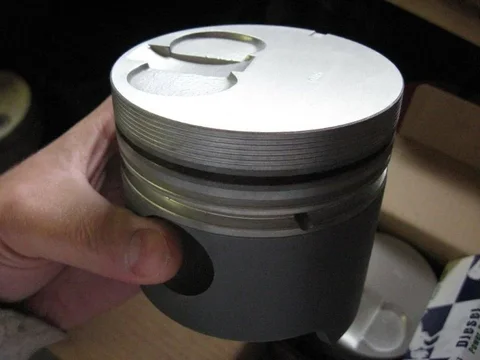turbo 3B
Someone here mentioned the possibility that a turbo 3B has a tendency to spin more bearings.
I've got 2 turbo 3B's. One has been turbo by the PO for around 10 years, has perfect oil pressure according to the 60 series gauge, it's last compression test numbers were 410,418,412,420 and it's got around 400k kms on it. It runs 9-10lbs of boost on a garett turbo from a volvo 240. EGT's never exceed 550 C.
My other 3B I turbo'ed 3 years ago. It has around 60k kms since a full rebuild, it runs 14lbs of boost on a Mitsu turbo from a Volvo 740. It runs between 200-400 kpa for pressure on a quality pressure gauge. (No compression test numbers for this one). EGt's never exceed 500 C.
My point is that a turbo does not seem to wear out your 3B as long as you don't get it really hot temp. wise or EGT wise and you don't run crazy boost. (I feel anything 15lbs or less is reasonable and conservative). The compression ratio difference may not be bothering anything. There seems to be lots of turbo 3Bs on this site that run a long time without problems.
If your EDIC is shutting your motor down b/c of low oil pressure it may be just doing it's job protecting your motor. You may for some reason have periods of low pressure that the EDIC is responding to and it may not be relays or sensors. Maybe the bottom end was just worn out?
FWIW,
Aaron
Someone here mentioned the possibility that a turbo 3B has a tendency to spin more bearings.
I've got 2 turbo 3B's. One has been turbo by the PO for around 10 years, has perfect oil pressure according to the 60 series gauge, it's last compression test numbers were 410,418,412,420 and it's got around 400k kms on it. It runs 9-10lbs of boost on a garett turbo from a volvo 240. EGT's never exceed 550 C.
My other 3B I turbo'ed 3 years ago. It has around 60k kms since a full rebuild, it runs 14lbs of boost on a Mitsu turbo from a Volvo 740. It runs between 200-400 kpa for pressure on a quality pressure gauge. (No compression test numbers for this one). EGt's never exceed 500 C.
My point is that a turbo does not seem to wear out your 3B as long as you don't get it really hot temp. wise or EGT wise and you don't run crazy boost. (I feel anything 15lbs or less is reasonable and conservative). The compression ratio difference may not be bothering anything. There seems to be lots of turbo 3Bs on this site that run a long time without problems.
If your EDIC is shutting your motor down b/c of low oil pressure it may be just doing it's job protecting your motor. You may for some reason have periods of low pressure that the EDIC is responding to and it may not be relays or sensors. Maybe the bottom end was just worn out?
FWIW,
Aaron


